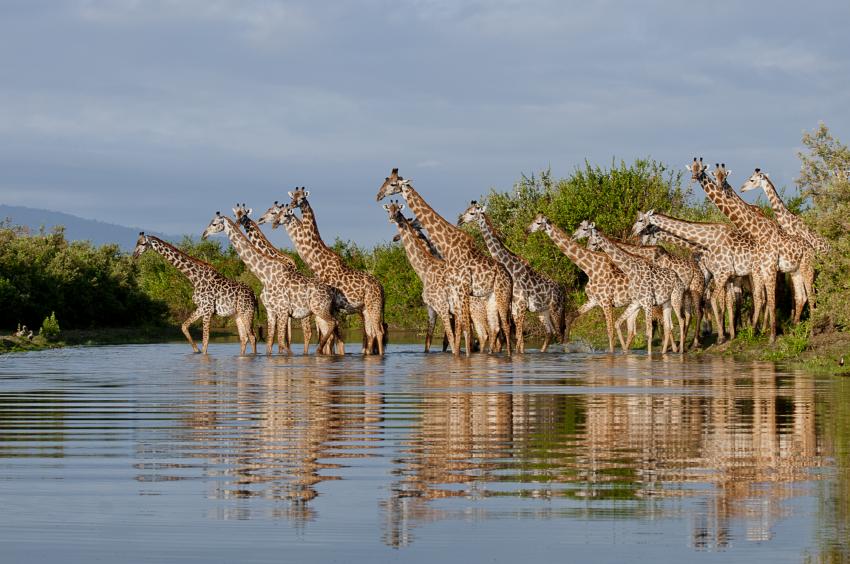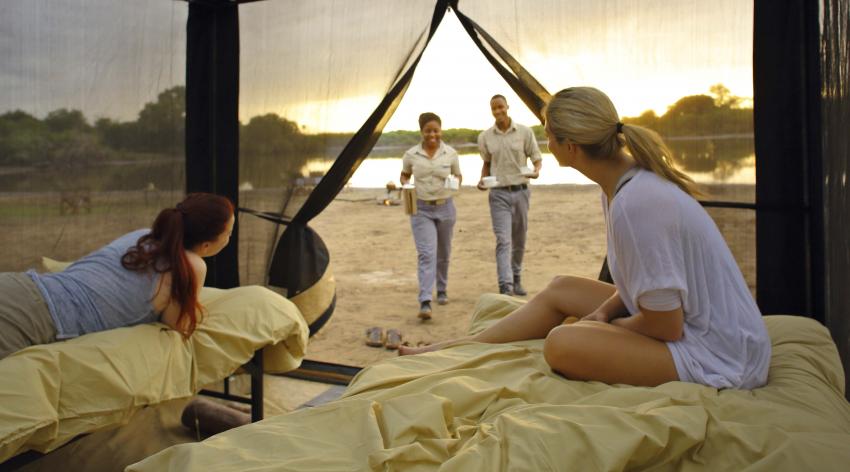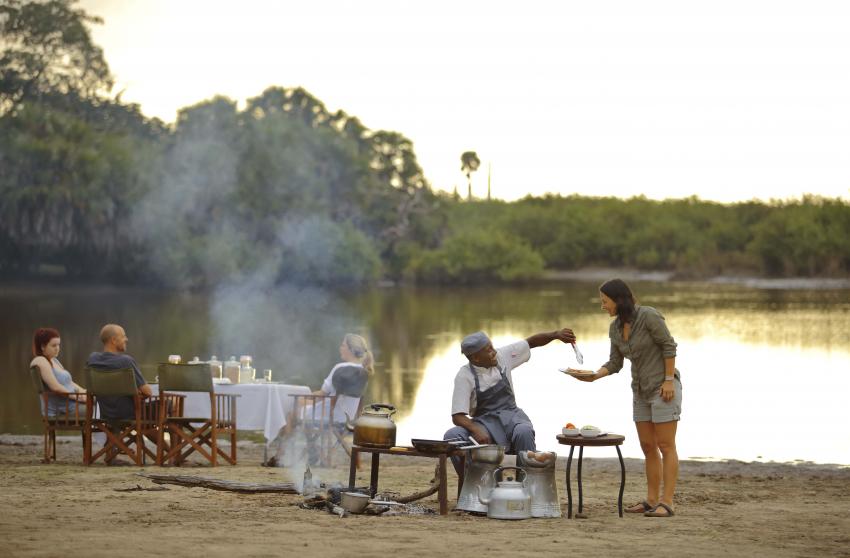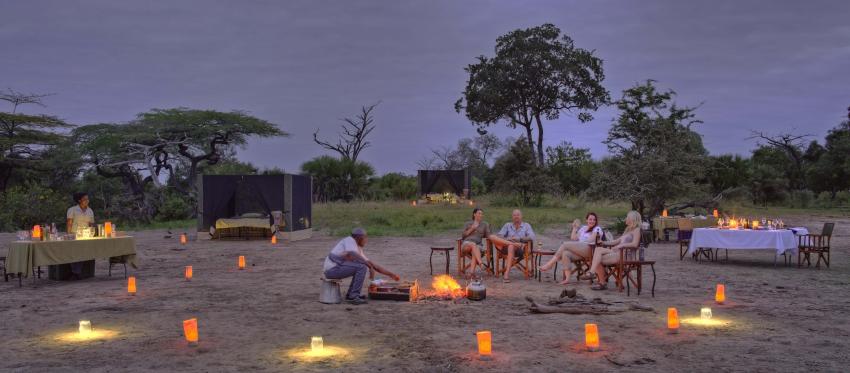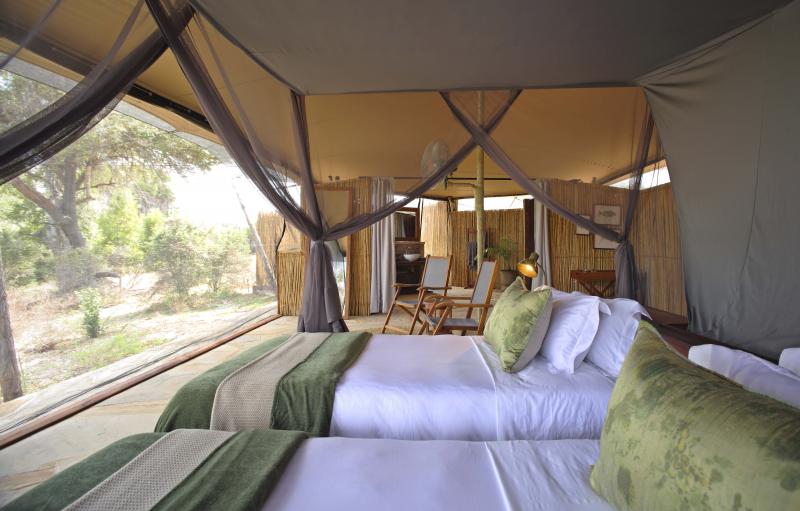One of the largest game reserves in Africa, the Selous Game Reserve sprawls across 50,000 square kilometres in the southeast of Tanzania. Its staggering wildlife diversity and undisturbed natural landscapes have seen it designated as a UNESCO World Heritage Site, although the region was first set aside as a protected area as far back as 1896 by the German Governor of Tanganyika, Hermann von Wissmann.

In 1905, the region was established as a hunting reserve and was later named after Frederick Selous. This big game hunter and conservationist died at Beho Beho (which lies within the modern-day Selous Game Reserve) during World War I while fighting against the Germans.
While many areas of the reserve are still used for game hunting as privately leased concessions, the northern part of Selous Game Reserve along the Rufiji River is a popular safari destination and photography zone. It’s dotted with high-end lodges and camps that run daily game drives and walking safaris, as well as boat safaris to spot animals as they refuel along the banks of the Rufiji River.

The Selous Game Reserve is not the easiest Tanzania safari destination to access by road but it’s well-served by flights and can even be visited along the country’s rail system. It also forms part of the Southern Circuit, which includes the Ruaha National Park, the Mikumi National Park and the Udzungwa Mountains National Park, making it a great option for those who want to explore multiple parks during their Tanzania safari tour.
Selous’ vast numbers of animals have seen it identified as one of the greatest surviving African wildernesses and one that’s not to be missed. If you’ve already experienced the Northern Circuit or want to get away from the crowds, here are a few reasons why you should consider the Selous Game Reserve for your next Tanzania safari.
What animals can you see in the Selous Game Reserve?

Encompassing Acacia savannah, wetlands and extensive Miombo woodlands, the Selous Game Reserve is a spectacular natural destination. Much of the wildlife action concentrates around the Rufiji River while the dramatic, 100-metre-deep Stiegler Gorge is another frequently visited tourist area. It boasts some of the largest populations of species in Africa, although their densities are lower than other reserves due to the sheer size of Selous.

The Selous Game Reserve is home to huge numbers of buffalos (120,000 - 150,000), as well as large numbers of hippos and around 4,000 lions - among the largest populations in Africa. It also supports healthy populations of wildebeest, zebra and impala, together with giraffe, greater kudu, waterbuck, Lichtenstein’s hartebeest and eland.
The reserve is also considered an important sanctuary for the endangered African wild dog, as well as sable and puku antelope. Add to that spotted hyena, leopard, black rhino and Nile crocodile and it’s no wonder Selous is renowned amongst safari enthusiasts. While the park was once home to around 109,000 elephants (at the time the largest population in the world), numbers have significantly dropped due to poaching and there are only around 13,000 left today.

Aside from its wildlife, more than 440 bird species have been recorded in the Selous Game Reserve. Keep your eyes peeled for African skimmers and giant kingfishers on the lakes and rivers, as well as yellow-billed storks, spur-winged plovers and fish eagles. The Malagasy squacco heron regularly visits during the winter months while trumpeter hornbills and purple-crested turacos can be seen in the forested areas.

Daytime game drives are the main way of exploring the Selous Game Reserve (night safaris are not permitted), with most operators heading out during the early morning and late afternoon hours when the wildlife is at its most active. Boat safaris along the lakes and rivers are incredibly popular, allowing you to get up close to animals such as crocodiles and hippos.

Most of the lodges also offer walking safaris, which are a unique way to encounter big game and spot a myriad of birdlife. Another unforgettable way to experience Selous is on a fly camping trip where you’ll be treated to a bush dinner and a night spent under the stars at a temporary camp. While this might sound scary to some, with wild animals all around, you’ll be accompanied by an armed scout to ensure your safety at all times.
How to get to the Selous Game Reserve
The Julius Nyerere International Airport in Dar es Salaam is the main gateway for most travellers visiting the Selous Game Reserve. From here, it’s a full day’s drive along dusty and bumpy roads, with many safari operators including a stop at Mikumi National Park to break up the journey. The route takes you through the town of Morogoro, which is backed by the magnificent Ulugulu Mountains and allows you to see how rural communities live in Tanzania.

However, most travellers prefer to book a fly-in package from Dar es Salaam or visit Selous Game Reserve after a beach holiday in Zanzibar, with daily scheduled flights from the island to Selous. You can also book a flight from Arusha or the Serengeti if you’re combining a visit to the Selous Game Reserve with Tanzania’s Northern Circuit or the Serengeti migration.
The other option is to travel along the Tanzania Zambia Railway from Dar es Salaam to Matambwe, which lies at the southern entrance to the Mikumi National Park and north of the Selous Game Reserve. It’s a scenic way to experience the Tanzanian bush (without the bumps of the road journey) while meeting local people along the way.
Best time to visit the Selous Game Reserve
The best time to visit the Selous Game Reserve is the dry season from June to October. The wildlife is much easier to spot as it gathers around limited water resources and the vegetation is also much thinner during this period. Clear and sunny skies make it an ideal time to be out on safari and there are far fewer mosquitos (and a reduced chance of catching malaria).
It also coincides with the peak period for tourists when the area around the Rufiji River can becomecrowded. Visitors should also be aware that it can be quite dusty during this period, although the low humidity and temperatures do make it more pleasant.
October sees the first rains begin to fall, transforming the landscapes a lush green. Bird watching in the Selous Game Reserve is at its peak as migratory birds flock to the wetlands and many lodges reduce their rates significantly throughout the rainy season.
It’s important to keep in mind that some roads become extremely muddy and many lodges close altogether during the months of March, April and May when the heaviest rains descend. Some animals begin moving away from their feeding grounds to more fertile areas, but provided you select your lodge or camp well, you may be treated to some incredible wildlife encounters during the “wet”.
Where to stay in the Selous Game Reserve
The majority of accommodation is concentrated in the northern part of the Selous Game Reserve and there are plenty of options for those wanting a luxury safari in Tanzania. In addition to fabulous accommodation with all the modern comforts, you can participate in daily game drives, boat safaris and both short and long walking safaris.

Because the lodges and camps in the western part of the Selous Game Reserve are relatively spread out, you can embark on a private safari in Tanzania and go entire days without seeing another vehicle. Alternatively, opt for one of the lodges and camps in the east of the reserve, which is known for its sightings of lions and wilds.
Want to plan a Tanzania safari package to the Selous Game Reserve? Check out our impressive range of luxury lodges and camps to inspire your next adventure.

 1-321-766-6821
1-321-766-6821 
